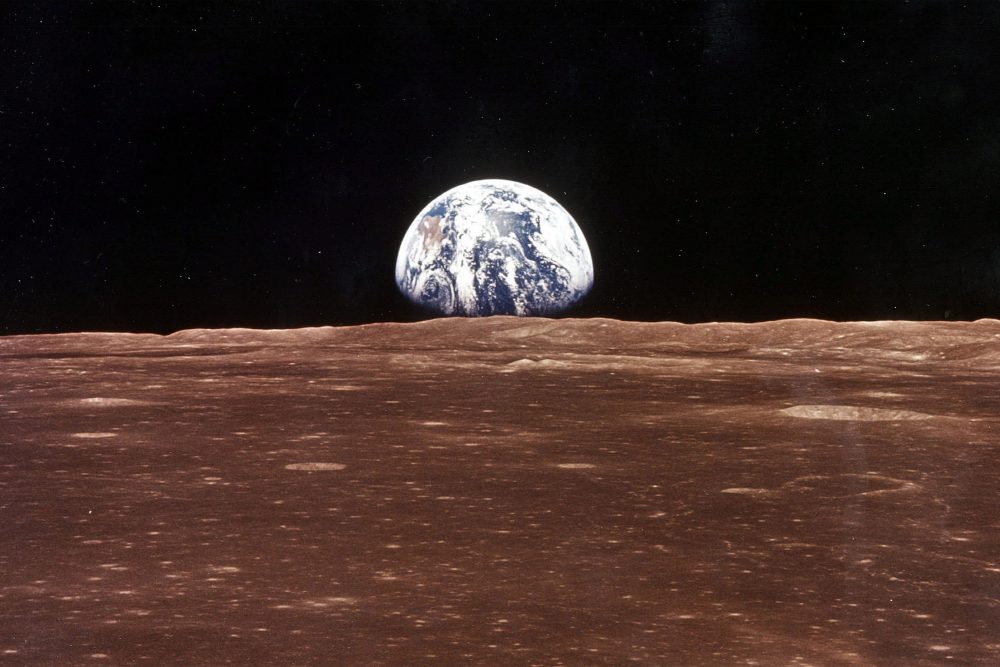The first humans walked on the moon in 1969. Will the last humans be born on the moon in 2969, after we’ve totally screwed up our own planet?

That’s the thinking behind a new proposal from researchers at the University of Arizona, who are floating the idea of building a futuristic Noah’s Ark-style complex on the moon.
The ark would be an underground facility staffed by robots, powered by the sun and stocked with loads of sperm, eggs, spores and seeds from 6.7 million species on Earth — just in case we totally kill ourselves and everything around us.
Researchers say such an ark would be a “modern global insurance policy” and a good investment in our future, especially since the Svalbard Global Seed Vault in Norway is already seeing some wear and tear from climate change. The facility houses a catalogue of seeds from around the world, but does not include human or animal samples.
Lead engineer Jekan Thanga presented the Moon Ark idea to a gathering of experts, including NASA, at the IEEE Aerospace Conference earlier this month, where he described it in a 20-minute presentation.
Thanga says the moon would be a good place to set up a fully automated ark, because the moon is not susceptible to the same weather shifts that we see on our planet. It’s simply a cold, dead, boring ball, and it’s dense enough to repel solar radiation if we hide things below its surface. That makes it a good place to stockpile samples in cryogenically frozen capsules.

Thanga cited a few of the ways we could easily screw things up on Earth, including our ongoing failure to reverse climate change and the potential for nuclear war.
“Earth is naturally a volatile environment,” Thanga said in a news release from the university. “Because human civilization has such a large footprint, if it were to collapse, that could have a negative cascading effect on the rest of the planet.”
He says the notion of launching millions of samples into space might sound daunting, but some “back-of-the-envelope calculations” suggest it could be done in about 250 rocket launches. It took 40 launches to build the International Space Station, he points out.
“It’s not crazy big,” Thanga said of the project. “We were a little bit surprised about that.”
Of course, we’d have to send humans there to do the construction work.
NASA and its partners plan to send humans back to the moon as part of the Artemis program in 2024. The program could potentially lay the groundwork for future bases on the moon, both manned and unmanned, although the idea of building an ark is likely far down the road.
The moon pie-in-the-sky idea combines several cutting-edge or theoretical concepts to image a self-sufficient “ark” on the moon.
Researchers say the facility could be built in the empty lava tubes and pits underground, and it could be powered by solar panels on the moon’s surface. Magnets could be used to keep the samples cryogenically frozen, and sphere-shaped robots (like droid BB-8 from Star Wars) could be used to maintain the facility. Everything would need to be designed to operate at low temperatures, but the cold could be a good thing for keeping the frozen samples stable.
The Moon Ark is simply a proposal at this point, and there are no plans to actually start building it.
The researchers acknowledge that they still need to investigate the idea a lot more before a full plan can be assembled.
They also did not lay out plans for restarting life in the distant future, if that becomes necessary.
All that raises the question: Who will bring humanity back?
Will it be a few surviving Noahs who don’t die on Earth? Or will it be aliens who stumble upon the facility in some far-distant future?
Perhaps we need to answer an even bigger question first: If we screw things up once on Earth, do we deserve to come back for a second chance?





Comments